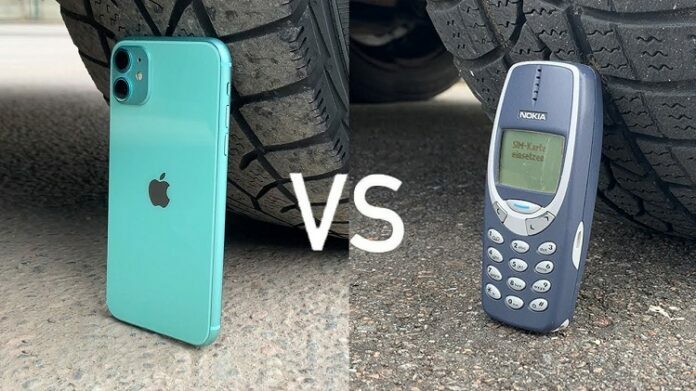After receiving a bunch of complaints from the users and some hard hits from the media, Apple decided a couple of weeks ago it’s time to speak up and held a press conference regarding the so called iPhone 4 “deathgrip”. First let me explain what this death grip actually means. It is in fact a signal loss from different cell phones when held in certain ways that cover sensitive parts of the antenna. Apple dedicated a part of their site, apple.com/antenna, just to explain how this can occur on the iPhone 4 or the iPhone 3GS as well as to other phones from different brands. Apple informs that every antenna from every device can suffer attenuation if obstructed in specific ways. This includes antennas from TV, radio, GPS or cell phones. On the site, Apple also tries to explain that holding the iPhone 4 in such a manner resulting in the cover of the bottom left corner of the device may cause loss of signal which doesn’t necessarily mean the perturbation or impairment of the communication process.
The company tried to excuse itself by mentioning that more than $100 million were invested designing the antenna for the iPhone 4 and creating test labs for this antenna and that other major smartphones experience the same problems as the iPhone 4 or the iPhone 3 GS. In the list of examples, Apple included the BlackBerry Bold 9700, the HTC Droid Eris and Droid Incredibe or the Samsung Omnia II. During the press conference, chief executive Steve Jobs also attacked Nokia by underlying the fact that phones from the Finland-based company often ship out with stickers pointing out sensitive places that must not be touched in order to not lose any signal.
After Steve Jobs threw some punches towards different brands of smartphones and
Apple posted videos and photos of different grips from several handsets that cause signal loss, Research in Motion and Nokia decided to issue official responses mostly by accusing Apple of lack of fairplay.
BlackBerry Bold 9700 “weak spot”
RIM’s chief executive officers Mike Lazaridis and Jim Balsillie categorized Apple’s statements regarding the BlackBerry Bold 9700 as an “attempt to draw RIM into Apple’s self-made debacle” sustaining the idea that Research in Motions is a global leader in antenna design and that the company is handling these matters for over 20 years. The Canada-based Corporation closed up by making an appeal on Apple to take responsibility for its actions and mistakes rather than drawing RIM and other brands in its mess.
Instructions manual for Nokia E71
Nokia on the other hand didn’t actually dismiss Apple’s claims and admitted that signal strength can be influenced by a tight grip but also underlined the manpower and thousands of hours invested in studying antenna designs. They also pleaded their case by assuming the role of pioneers in internal antennas and stating that antenna performance always comes first over physical design. Nokia’s troubles regarding the “weak spot” of the internal antenna began somewhere around June when an official blog post made fun of iPhone 4’s issues with the signal. Nokia then dismissed every chance that there could actually be a “weak spot” on any of their handsets that could interfere with the signal’s power. In return, users immediately posted videos showing different devices from Nokia experiencing exactly these kinds of symptoms when held in certain ways. Amongst the problematic phones, users presented a Nokia E71, a Nokia 6230 and a Nokia 6720 as well as HTC’s Droid Incredible and Google’s Nexus One. Even a picture of the official user instructions from a Nokia 2320 was posted on the blog showing a warning against touching the bottom antenna section of the phone. These kinds of warnings can actually be seen on multiple Nokia handsets, some manuals directly emphasizing that any contact with antennas affects communication quality and even battery life.
Steve Jobs assured the public during the press conference that Apple took this matter very seriously and pointed out the resources invested in the antenna reception issues, like the seventeen $100 million anechoic chambers or the eighteen PhD scientists and engineers from their staff, even though this is not a major problem since only 0.55 percent of all the iPhone customers filed complaints at AppleCare from which just 1.7 percent returned their iPhone 4 as opposed to the 6 percent seen last year returning the 3GS. Jobs also underlined the release of the iOS 4.0.1 that has only one improvement regarding the accuracy of the handset’s display of the signal strength which does not mean the improvement of the actual strength of the signal.


![[Rumor] Nokia T-Mobile Astound Release Date: April 6th. Price: $79.99 [Rumor] Nokia T-Mobile Astound](https://free-pc-guides.com/wp-content/uploads/2022/10/Rumor-Nokia-T-Mobile-Astound-218x150.png)





![[Rumor] Nokia T-Mobile Astound Release Date: April 6th. Price: $79.99 [Rumor] Nokia T-Mobile Astound](https://free-pc-guides.com/wp-content/uploads/2022/10/Rumor-Nokia-T-Mobile-Astound-324x235.png)
